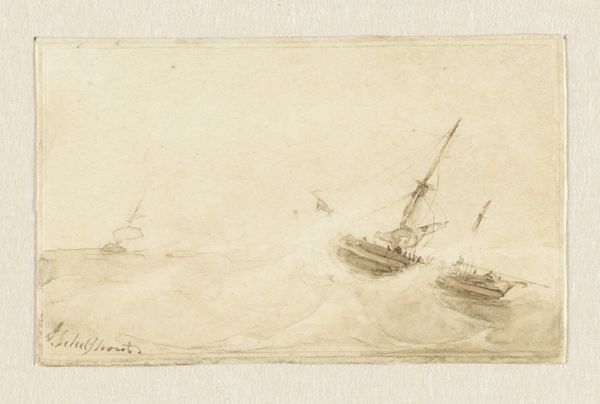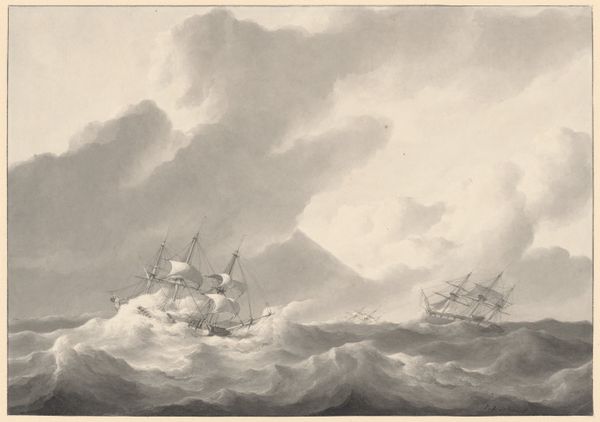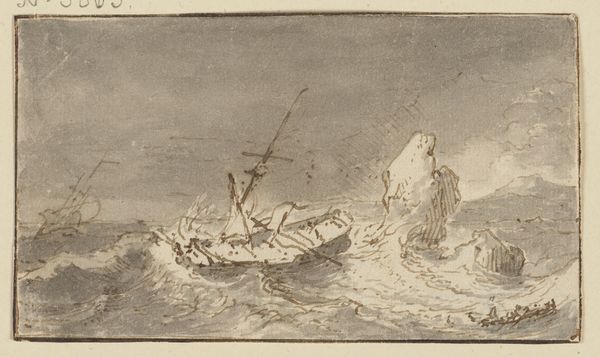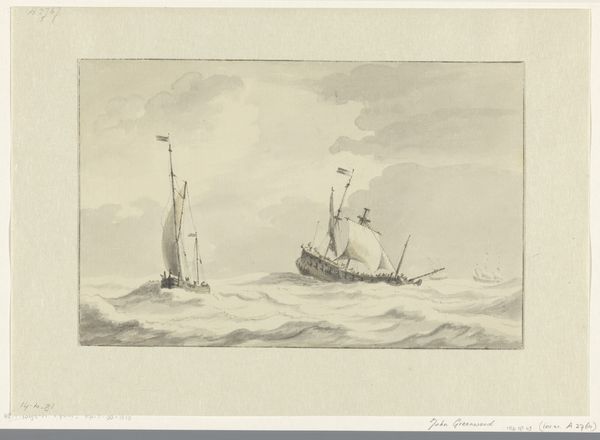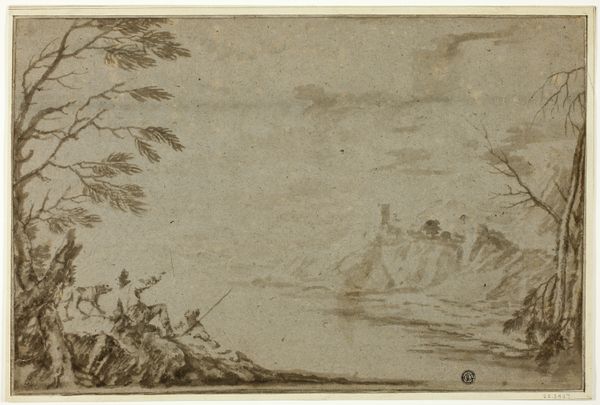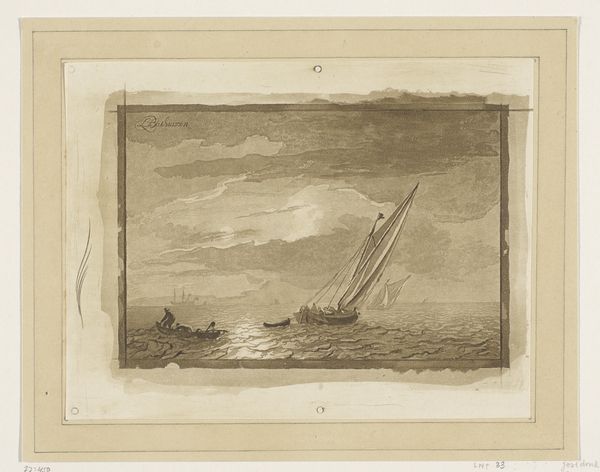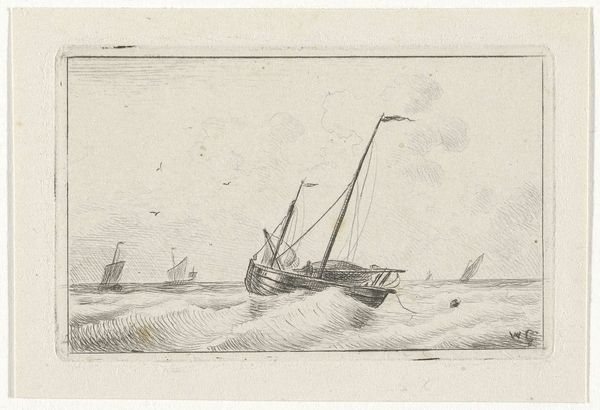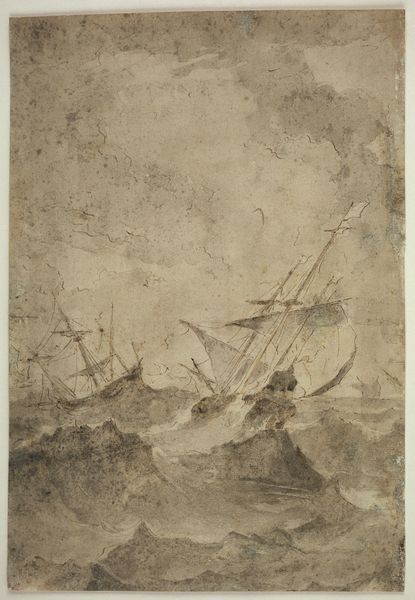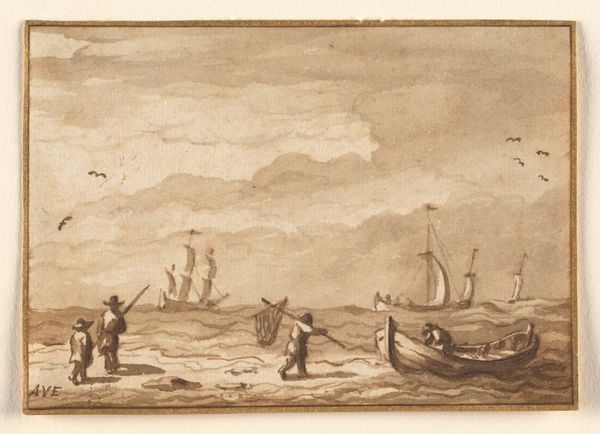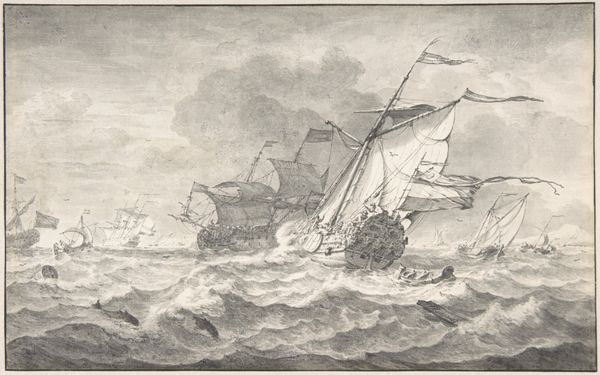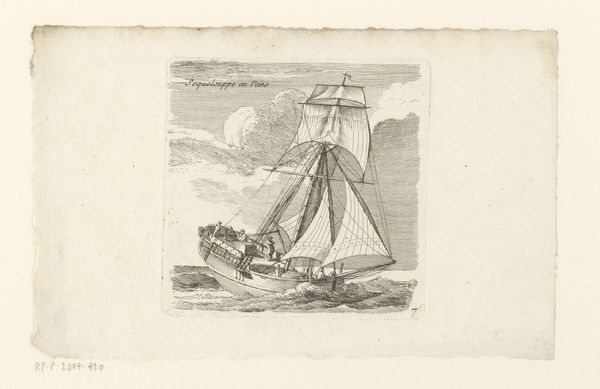
painting, watercolor
#
water colours
#
narrative-art
#
painting
#
landscape
#
etching
#
figuration
#
watercolor
#
romanticism
#
watercolor
Dimensions: height 295 mm, width 494 mm
Copyright: Rijks Museum: Open Domain
Editor: Here we have Albertus van Beest's "Tweemaster op hoge zee," created sometime between 1830 and 1860. It's a watercolor, and it's really striking how the monochromatic palette creates this overwhelming sense of turbulence and struggle. What can you tell me about how this piece might relate to the social and political context of the time? Curator: Absolutely. Van Beest created this watercolor during a period of intense colonial activity, and I think it's crucial to consider that historical context. It captures a ship battered by the sea, almost vulnerable. Doesn't it invite a dialogue about power, control, and the often brutal relationship between humans and nature – reflecting broader themes of exploration, exploitation, and the inherent risks of maritime ventures that enabled empire-building? What does this evoke in terms of how nations exerted their power during this era? Editor: It makes me think about the immense power and reach of those nations, but also the fragility of those ambitions when confronted by forces beyond their control. So it's not just about adventure, but about the human cost involved? Curator: Precisely! We must remember this era wasn’t just about charting new territories, it involved the subjugation and displacement of entire populations. Visualizing this struggle within nature prompts us to critically examine the legacies of colonialism. Do you think the subdued colours could symbolize something about the hidden costs or moral ambiguities surrounding this intense period of expansion? Editor: I never would have considered that perspective, but the monochrome palette and rough brushstrokes suddenly seem incredibly loaded. I'm seeing this painting in a whole new light! Curator: Which highlights how crucial it is to recognize the complex interactions between artistic representation, history, and social dynamics, urging us to reflect deeply on the interwoven strands of identity, power, and historical understanding embedded within this painting.
Comments
No comments
Be the first to comment and join the conversation on the ultimate creative platform.

